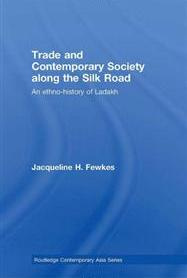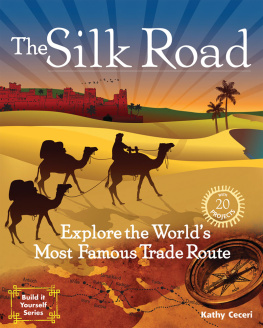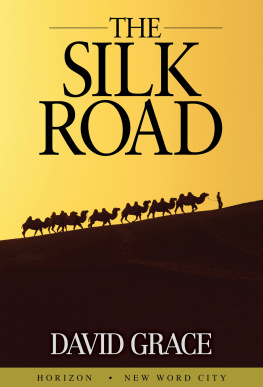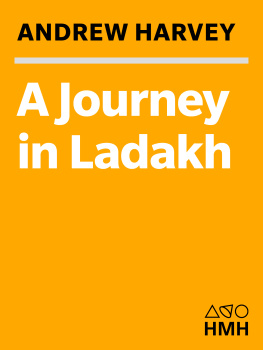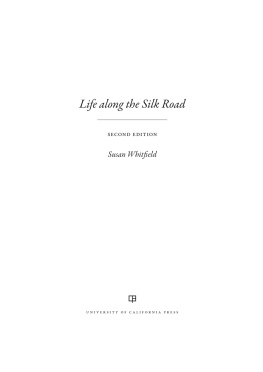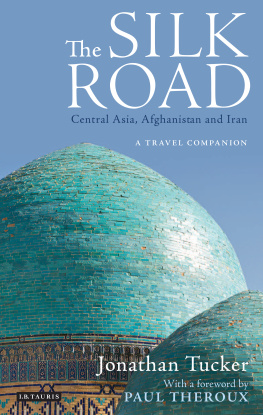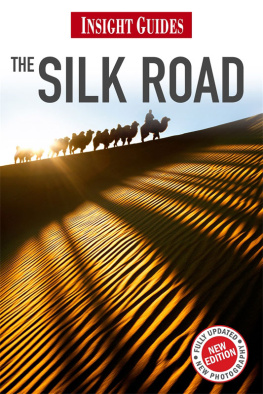1 Beyond the roof of the world
Hemmed in by mountains on every side, the area of Ladakh is often geographically defined in relation to its surroundings. Near the valley of Kashmir, the region is on the western edge of the Tibetan plateau, situated between the Himalayan mountain range to the south and the Karakoram1 Range to the north. In synchronic geo-political terms it includes two political districts in the state of Jammu and Kashmir, Leh2 and Kargil; these are also the names of the two main towns in Ladakh, each an urban center of their respective district. Ladakh comprises close to 70 percent of the geographic territory of Jammu and Kashmir, yet its current population, notoriously small by Indian national standards, is less than 3 percent of the states population. This sparse population makes Ladakh the least populated region in the nation of India, with a regional population of only 232,864 (Census of India 2001). Yet, at times there can be at least twice this many people in Ladakh. Walking through Lehs main bazaar today are many individuals who have come from other parts of India for work, including transient laborers, shopkeepers with seasonal shops, and army personnel. A large number of traders from other areas within the state of Jammu and Kashmir come to Ladakh during the summer months to run shops and restaurants during the busy tourist season, which attracts thousands of domestic and international tourists.
Many of these tourists come to Ladakh in response to descriptions in tourist advertisements such as this one:
See towering mountains reach up to a clear blue sky. Hear the rhythmic chant of Buddhist monks in an ancient monastery where time stands still. See the rushing waters of an icy river surge down from a glacial height. Ladakh - the Land of Passes and the Roof of the World awaits you.
(Indianvisit.com Pvt. Ltd. 2006)
Although shallow, this view of Ladakh offers a key to a more complex and holistic view of the region. Contrary to the claim that time stands still here, designations such as the Roof of the World are notions of Ladakh that have been constructed over time in response to political, social, and economic trends in the region.
Consider for example two tourists views of Ladakh from opposite ends of the twentieth century. Early twentieth-century visitors to Ladakh frequently wrote of its main city, Leh, as a cosmopolitan hub for activities, technologies, and people from around the world. Eleanor Holgate Lattimore explained in 1935 that her traveling party had looked forward to arriving in Ladakh after a long journey through Central Asia,
for we knew that in Leh we would find the beginnings of civilization and a traveled road. And so it proved, for while we are still half a month from Kashmir and India, Lehs dak bungalow [government rest house], post office and telegraph office spell the beginning.... There are even tourists here, a German novelist, an artist, and a Harvard student.
(Lattimore 1935:307)
Her version of Ladakh is quite unlike that of tourist Andrew Harvey nearly fifty years later; while Lattimore saw Ladakh as the beginning of civilization, Harvey saw the end. He answered the complaints of a disappointed tourist:
it is true that there is only one main street with an ugly inefficient post office, an ugly Cultural Academy, and two rows of ugly tumbledown over-expensive under-stocked shops; and there is no graceful order to the streets or houses, that run into each other haphazardly. Yet Leh does have charm. There is nothing whatever to do. That is Lehs charm.
(Harvey 1983:28-29)
Both tourist narratives focus on the material veneers of Ladakh in the twentieth century. Viewing the marketplace, Ladakh in 1935 is an outpost of civilization along Central Asian trading routes, while in 1983 it is a dull backwater of the Indian tourist circuit. The convenient facilities of the past seem to have vanished in Harveys account, although the travelers remain. The differences between these accounts are reconciled only through an understanding of what has changed in Ladakhi politics, economics, and society between 1935 and 1983.
Ladakh has many nicknames, such as the Moonland, Little Tibet, The Last Shangri-la, and Roof of the World; invocation of any these names evinces a particular set of assumptions about and interest in the region. While we cannot understand Ladakh solely through the lens of these nicknames, upon examination each phrase, and its associated myths, reflects different facets of discussion about the region of Ladakh as well as economic, political, and social issues faced by the Ladakhi people. Therefore in this chapter I will use these nicknames as an orientation point from which to introduce readers to significant social trends in contemporary and historical Ladakh.
The Moonland and the Land of Passes
Use of Ladakhs nickname the Moonland conjures a mental image of remote, rugged terrain with an otherworldly beauty, devoid of humans and human artifacts. The Moonland nickname is used more specifically in reference to an area of extreme geological formations located along the Leh-Kargil highway road near Lamayuru Monastery. The monastery is part of many tour itineraries for visitors to Ladakh, and the area is also in viewing distance from the highway used
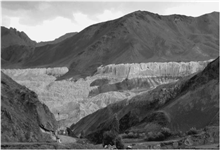
Figure 1.1 The Moonland terrain is lighter than the high mountains above and settled valley below. Photograph by Abdul Nasir Khan.
by all land traffic on the road up from Srinagar; thus this high profile bit of land has become an icon for the rugged terrain of Ladakh.
This particular part of the landscape is, according to geologists, comprised of sedimentary limestone that dates back to a time when the Paleo-Tethys Ocean covered the area, before South Asia and the Asian continent collided (Upadhyay et al. 2005:982). Geological analysis has indicated that there are strata in the Kohistan-Ladakh region that were neither a part of the sub-continental plate of South Asia or the continental plate of Asia, a curious metaphor for social studies of the region since many twentieth-century social scientists consider the mountain ranges surrounding Ladakh a definitive cultural boundary between Asia and South Asia (see for example Hambly 1966:1-2). Even seasoned geographers/geologists are struck by this unique terrain. There is evidence for uncharacteristically sudden movements of glaciers in the chain of mountains surrounding Ladakh (Mason 1935, and Stellrecht et al. 1998), and a surprising variety of geological sources present in material analyses of the mountain structures (Zeitler, Sutter, et al. 1989). In spite of the other-worldly nature of the land that the Moonland nickname implies, however, the terrain of Ladakh is certainly of terrestrial source.
While the Moonland name for Ladakh over-emphasizes regional geography to present the region, and its inhabitants by extension, as other-worldly, geography does play a role in shaping social life in Ladakh. The surrounding mountains block most of the sub-continental monsoon rains from reaching Ladakhs inhabited valleys, which have some of the lowest recorded amounts of rainfall in South Asia. Limited precipitation makes Ladakh arid, and enables its inhabitants to construct large multi-story buildings from mud bricks that would quickly crumble in more humid environments. While uninhabited areas of Ladakh resemble a high altitude desert, carefully constructed irrigation using glacial streams and water from the Zanskar and Indus rivers have enabled inhabitants to create lush green inhabited areas and fostered agricultural production of grains such as barley and vegetables such as carrots, cabbage, and more recently, potatoes. Approximately 84 percent of Ladakhi inhabitants live in rural areas engaged in such agricultural practices (Census of India 2001), although this number is shrinking as twenty years ago 91 percent lived in rural communities (Census of India 1981). Yet, as less than 1 percent of land in Ladakh is classified as urban area, agricultural practices continue to play a role in Ladakhi economies and in shaping Ladakhi culture. Residents use the unique high altitude flora as medicinal plants (Kaul 1997), and socio-political relations in villages are partially structured in relation to irrigation. A number of regional ecology studies based in Ladakh have provided a view of the relationship between environmental conditions and cultural practices in the region that emphasize ecological issues faced by populations in many parts of the world such as the impact of the intensification of agricultural practices and waste from tourism industries (see for example Sagwal 1991 and East and Luger 1998). Such studies that link Ladakhs socio-geographic issues to global trends easily contradict claims made in the following newspaper passage that reflect the geographic exoticism that results from conceptualizing Ladakh as a moonland. The author writes:
Next page
